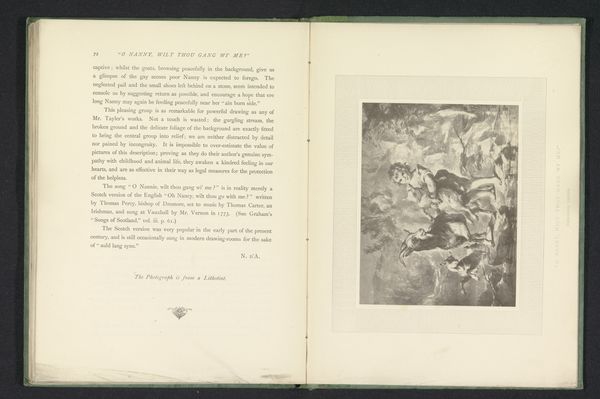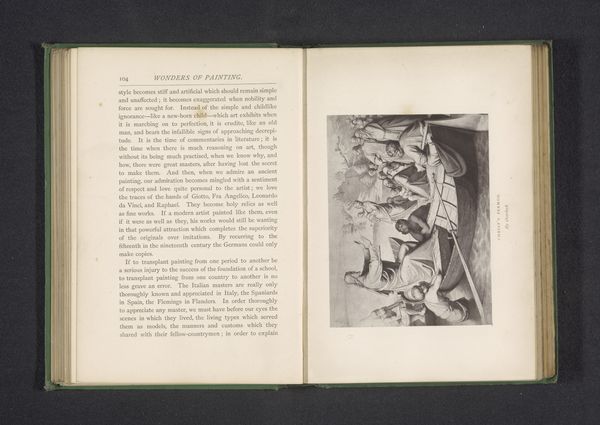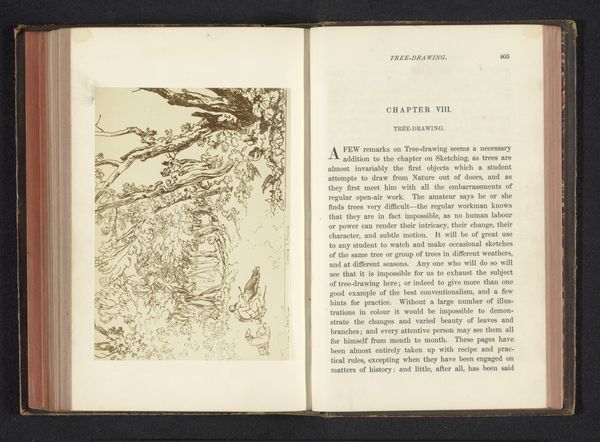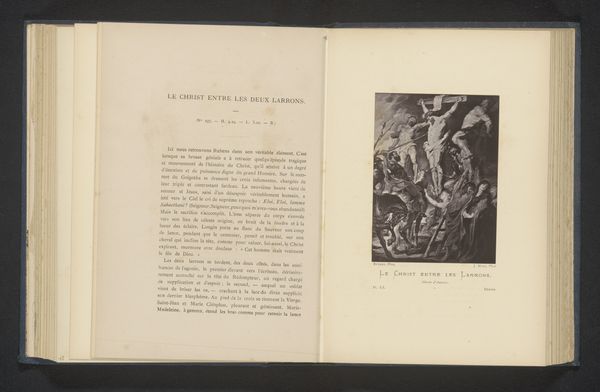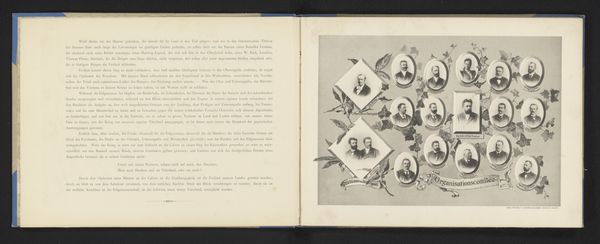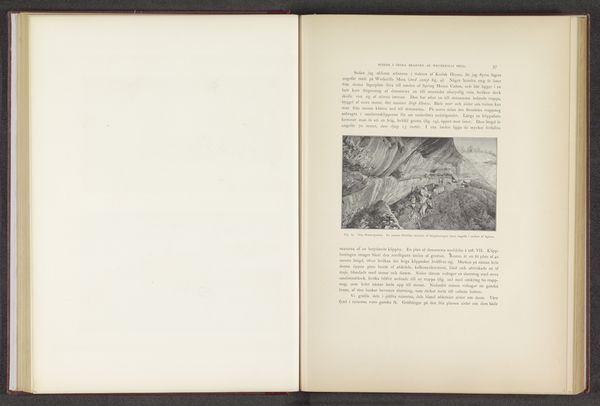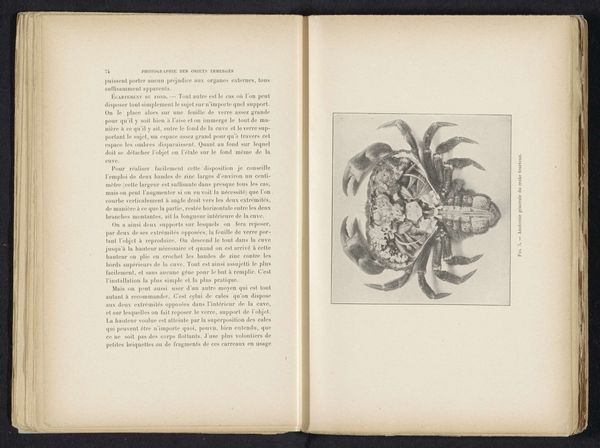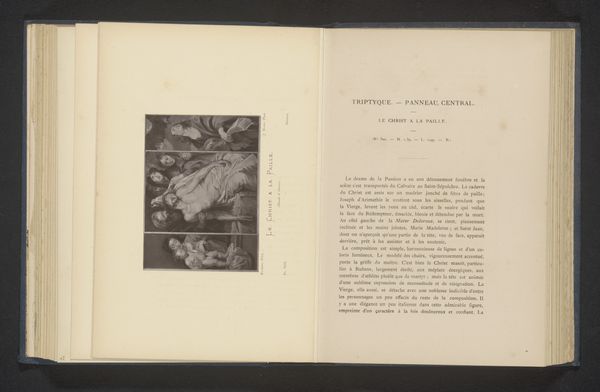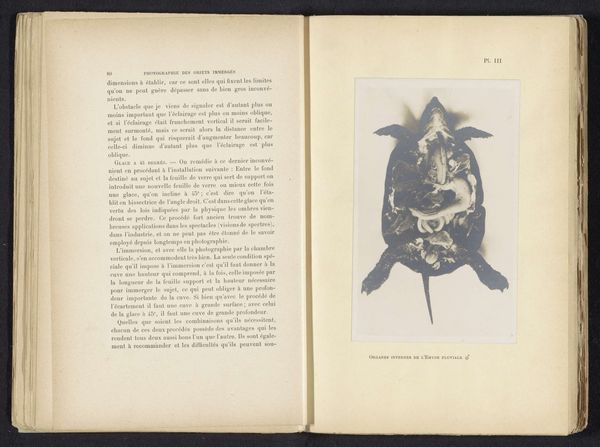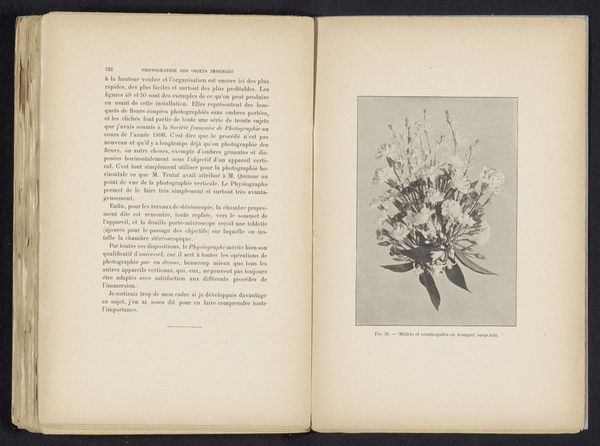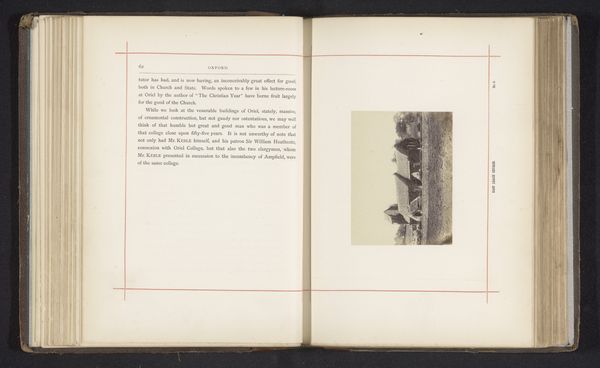
Fotoreproductie van een verjaardagskaart door Randolph Caldecott, voortellend een man met een grote anjer in zijn hand before 1887
0:00
0:00
drawing, print, paper, ink
#
portrait
#
drawing
#
narrative-art
# print
#
figuration
#
paper
#
ink
#
line
Dimensions: height 90 mm, width 80 mm
Copyright: Rijks Museum: Open Domain
Editor: So, here we have a photo reproduction of Randolph Caldecott’s birthday card, likely before 1887. It’s ink on paper, a drawing really, depicting a man with an oversized carnation. It strikes me as quite whimsical, almost theatrical. What do you see in this piece? Curator: Beyond the surface-level whimsy, I see a fascinating commentary on class and performativity. Consider the “Lilliputian figure” described—his clothing, the "old-fashioned green coat, with white frill and periwig,” are signifiers of a particular social class, mimicking aristocratic fashion. How does the scale of the carnation, obscuring his form, skew our perception of that identity? Editor: Well, it makes him seem less serious, perhaps. Almost comical, in contrast to the finery of his clothes. Curator: Exactly! Caldecott seems to be critiquing the artificiality of societal roles. This exaggerated floral gift, dwarfing the giver, what could this act of supposed generosity really mask? Editor: So it is an almost sardonic statement about superficial displays of affection? Curator: Precisely! It questions what these presentations actually communicate and if those are truly felt. How might Caldecott use such a humorous depiction to subvert expected narratives around class and gifting? Do you consider the social context of birthday celebrations for children here? Editor: That makes so much sense! I hadn't considered that reading, it's really insightful to place the image within its socio-historical framework. I will now definitely question assumed traditions, especially those which carry implicit hierarchies. Curator: I am very happy that you’re now approaching things with new insights and concerns. This understanding provides us new tools to question similar dynamics operating in the art we see everyday.
Comments
No comments
Be the first to comment and join the conversation on the ultimate creative platform.
